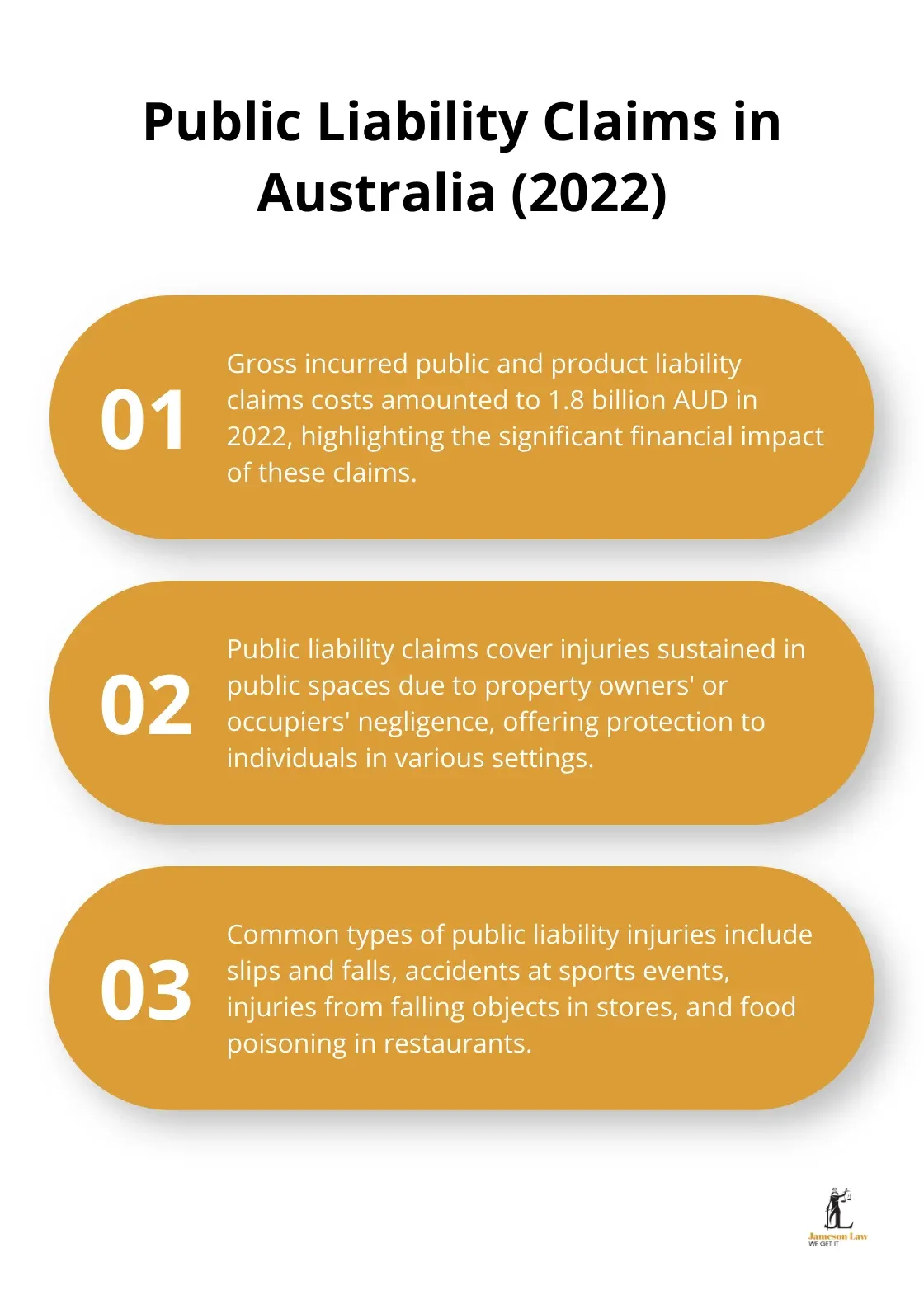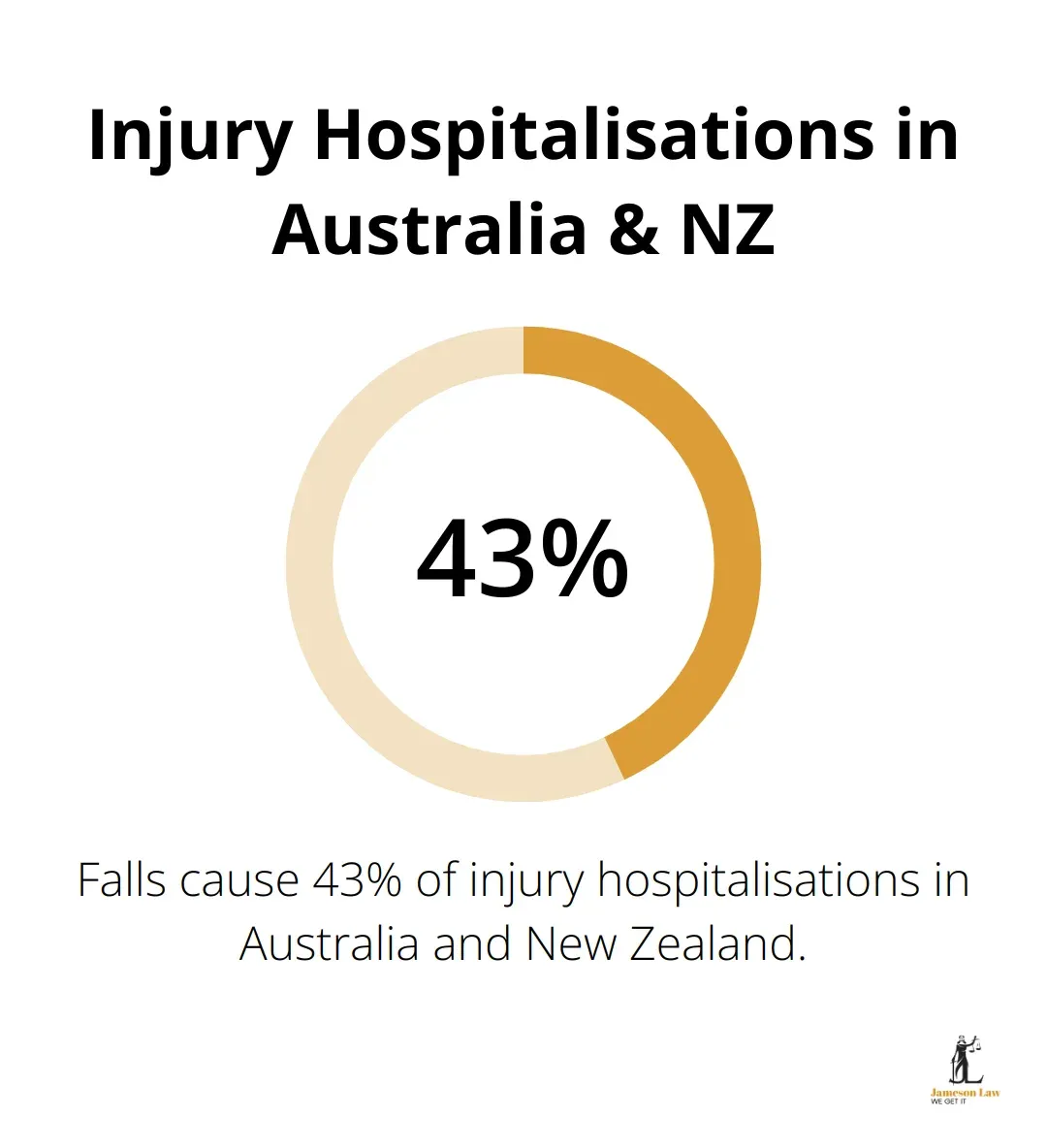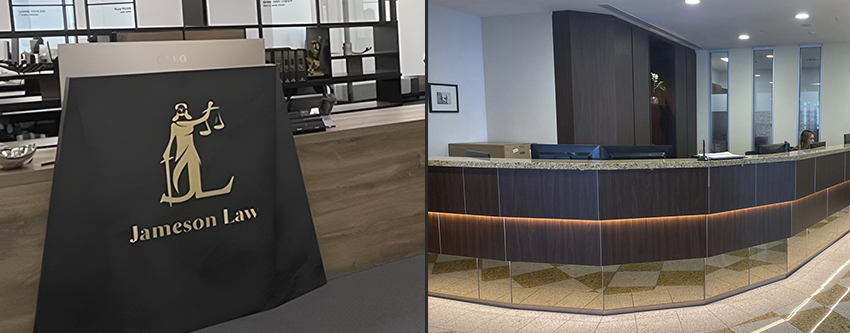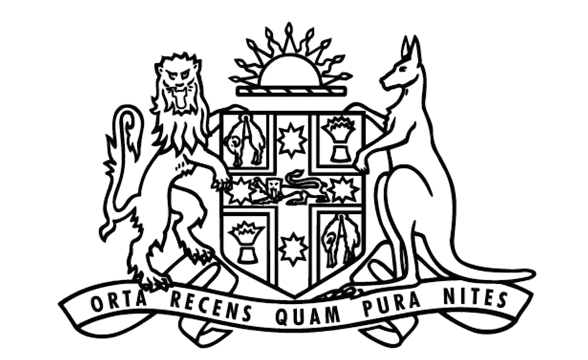Public liability injury claims can be complex and overwhelming for those unfamiliar with the process.
At Jameson Law, we understand the challenges faced by individuals seeking compensation for injuries sustained in public spaces.
This guide will walk you through the essential steps to file a public liability claim in Australia, helping you navigate the legal landscape with confidence.
Need help in Sydney/NSW? Speak with our public liability lawyers on (02) 8806 0866 or request a callback via our Contact page. We also offer No Win, No Fee options for eligible personal injury matters.
Understanding Public Liability Claims in Australia
Definition of Public Liability Claims
Public liability claims are legal actions individuals take when they suffer injuries or damages due to property owners’ or occupiers’ negligence. These claims form a critical part of Australian law, offering protection to people in public spaces.
In Australia, state-specific legislation governs public liability claims. For instance, the Civil Liability Act 2002 (NSW) outlines the legal framework for these claims. This act specifies that the injury must have occurred due to the negligence of the party responsible.
In Sydney and across NSW, claims commonly arise in shopping centres, parks, footpaths and strata/common property. If your incident occurred in Greater Sydney, our team can guide you on notice requirements to councils, strata managers, and occupiers under the NSW legislative framework.
Common Types of Public Liability Injuries
Slips and falls top the list as the most frequent cause of claims, often resulting from poorly maintained surfaces or unmarked hazards.

Other common injuries include:
![]() Accidents at sports events or recreational facilities
Accidents at sports events or recreational facilities
![]() Injuries from falling objects in retail stores
Injuries from falling objects in retail stores
![]() Food poisoning in restaurants
Food poisoning in restaurants
![]() Injuries at schools or childcare centres
Injuries at schools or childcare centres
For high-level data on injury causes and hospitalisations, see the Australian Institute of Health and Welfare’s resources on injury trends (AIHW – Injury overview).
Establishing Negligence in Public Liability Claims
To succeed in a public liability claim, you must prove the property owner or occupier failed in their duty of care. This involves demonstrating that:
![]() The owner owed you a duty of care
The owner owed you a duty of care
![]() They breached this duty
They breached this duty
![]() You suffered injuries as a result of this breach
You suffered injuries as a result of this breach
Many cases show how seemingly minor oversights can lead to significant injuries. For example, a client won substantial damages after slipping on an unmarked wet floor in a shopping centre, resulting in a severe back injury.
Unsure if negligence can be proven? Review our overview on proving liability and getting compensation or speak with our team on (02) 8806 0866.
Time Limits for Filing Claims
Quick action is essential if you’ve sustained an injury. In most Australian states (including New South Wales), you have three years (Limitation Act 1969 (NSW)) from the incident date to file a public liability claim. However, this can vary depending on the circumstances and the state where the injury occurred.
Legal experts strongly advise seeking legal advice as soon as possible after an injury. Early action not only ensures you meet legal deadlines but also helps preserve crucial evidence for your claim. For general guidance on time limits, see LawAccess NSW.
The Role of Legal Representation
Navigating the complexities of public liability claims can prove challenging without proper legal guidance. A skilled personal injury lawyer can:
![]() Assess the strength of your claim
Assess the strength of your claim
![]() Gather and preserve essential evidence
Gather and preserve essential evidence
![]() Handle negotiations with insurance companies
Handle negotiations with insurance companies
![]() Represent you in court if necessary
Represent you in court if necessary
With the right legal support, you can focus on your recovery while your lawyer works to secure the compensation you deserve. As we move forward, let’s examine the specific steps you need to take when filing a public liability claim in Australia.
How to File a Public Liability Claim
Filing a public liability claim in Australia requires careful planning and execution. We’ve guided many clients through this process, and we’ve distilled our experience into practical steps you can take to strengthen your claim.
Immediate Actions After an Injury
The moments following an injury are critical. Your first priority should be your health and safety. Seek medical attention immediately, even if your injuries seem minor.

Prompt medical care can prevent complications and provide essential documentation for your claim.
While at the medical facility, request detailed records of your injuries, treatments, and prognosis. These medical reports form the backbone of your claim, linking your injuries directly to the incident. For symptom guidance and care pathways, you can also consult healthdirect.gov.au (Australian Government).
Gathering Compelling Evidence
Evidence collection can make or break your claim. Start by photographing the scene of the incident, focusing on any hazards or unsafe conditions. If possible, collect contact information from witnesses. Their statements can provide invaluable support to your version of events.
Keep a detailed diary of your recovery process, noting pain levels, limitations in daily activities, and any emotional distress. This personal account can significantly impact your claim’s value.
Reporting the Incident
Report the incident promptly to the property owner or manager. Many businesses have specific incident reporting procedures. Follow these carefully, but avoid admitting fault or making detailed statements about the incident without legal advice.
Request a copy of the incident report for your records. This official documentation can be crucial in establishing the timeline and circumstances of your injury. If your incident involves council land in Sydney, see City of Sydney – Report an issue for hazard reporting (not a substitute for legal advice).
Seeking Expert Legal Guidance
While it’s possible to handle a public liability claim on your own, the complexities of Australian law make professional legal assistance invaluable. A skilled personal injury lawyer can:
![]() Assess the strength of your claim
Assess the strength of your claim
![]() Navigate the legal intricacies of public liability law
Navigate the legal intricacies of public liability law
![]() Handle negotiations with insurance companies
Handle negotiations with insurance companies
![]() Ensure you meet all legal deadlines
Ensure you meet all legal deadlines
Many law firms (including ours) offer a no-obligation initial consultation to evaluate your case. An experienced team can provide tailored advice and develop a robust strategy for your claim. Start here: Public Accident & Public Liability – Jameson Law.
Understanding Time Limits
Time is of the essence when filing a public liability claim. While the three-year limit is standard, certain exceptions may apply, potentially extending or shortening the timeframe for filing a claim. However, this can vary depending on the circumstances and the state where the injury occurred.
Legal experts strongly advise seeking legal advice as soon as possible after an injury. Early action not only ensures you meet legal deadlines but also helps preserve crucial evidence for your claim. For practical guidance on starting a civil claim, see NSW Department of Communities and Justice and LawAccess NSW.
Now that we’ve covered the essential steps to file a public liability claim, let’s explore how to maximise your compensation and understand the factors that influence claim outcomes.
How Much Can You Claim in Public Liability Cases
Types of Damages
Public liability claims in Australia cover two main categories of damages: economic and non-economic losses. Economic losses include tangible expenses such as medical bills, lost wages, and future loss of earning capacity. Non-economic losses encompass pain and suffering, loss of enjoyment of life, and psychological trauma.

Factors Affecting Compensation
Several key factors influence the amount of compensation you can receive. The severity and long-term impact of your injuries play a significant role. Permanent disabilities or injuries requiring ongoing care typically result in higher payouts.
Your age and pre-injury earning capacity also significantly affect compensation amounts. Younger individuals with higher earning potential often receive larger settlements to account for future income loss.
The strength of evidence supporting your claim is paramount. Detailed medical reports, expert testimonies, and comprehensive documentation of your injuries and their impact on your life can substantially increase your compensation.
Maximising Your Claim
To maximise your compensation, keep meticulous records of all expenses related to your injury. This includes medical bills, travel costs for treatments, and any modifications made to your home or vehicle to accommodate your injury.
Seek prompt and appropriate medical treatment to aid your recovery and strengthen your claim. Follow all medical advice and attend all recommended appointments and therapies.
Avoid discussing your case on social media or with the defendant’s insurance company without legal representation. Insurance companies often use such communications to minimise payouts. For consumer guidance on insurers’ obligations, see the Australian Financial Complaints Authority (AFCA).
Time Limits and Legal Assistance
There is no specific time limit applied to all types of claims. How long you have to file a claim will depend entirely upon the type of claim you are filing.
Act promptly as evidence can deteriorate over time.
Engage a skilled personal injury lawyer early in the process to significantly impact your claim’s success. Many law firms (including Jameson Law) offer a free consultation for personal injury claims, ensuring you can access expert legal representation without upfront costs.
An experienced legal team can effectively negotiate with insurance companies and present cases in court, often resulting in higher compensation amounts for clients. They understand the tactics insurers use to undervalue claims and are prepared to counter them effectively.
Understanding Compensation Caps
It’s important to note that compensation in public liability cases may be subject to caps (maximum limits) in some Australian jurisdictions. These caps can vary depending on the state or territory and the specific circumstances of the case.
For example, in New South Wales, the Civil Liability Act 2002 (NSW) imposes caps on certain types of damages, including non-economic loss (such as pain and suffering). The exact cap amount is adjusted annually for inflation.
Try to consult with a legal professional to understand how these caps might apply to your specific case. A knowledgeable lawyer can help you navigate these limitations and structure your claim to maximise your compensation within the legal framework.
Based in Sydney? Learn more about personal injury basics, explore our public liability articles, or speak directly with a public place injury lawyer on (02) 8806 0866.
Final Thoughts
Public liability injury claims require swift action and thorough documentation. You must seek immediate medical attention, gather strong evidence, and document all aspects of the incident. Professional legal guidance will help you navigate the complexities of Australian law and meet all necessary deadlines.
The compensation you receive depends on various factors, including injury severity and long-term impact. Compensation caps may apply in certain jurisdictions, which emphasises the importance of expert legal assistance. You should set realistic expectations and understand the elements that influence your claim’s value.
We at Jameson Law specialise in guiding clients through public liability claims. Our experienced team offers tailored legal support to maximise your compensation while you focus on recovery. With our No Win, No Fee policy for personal injury claims, you can access expert legal representation without upfront costs. Call (02) 8806 0866 or enquire online today.













